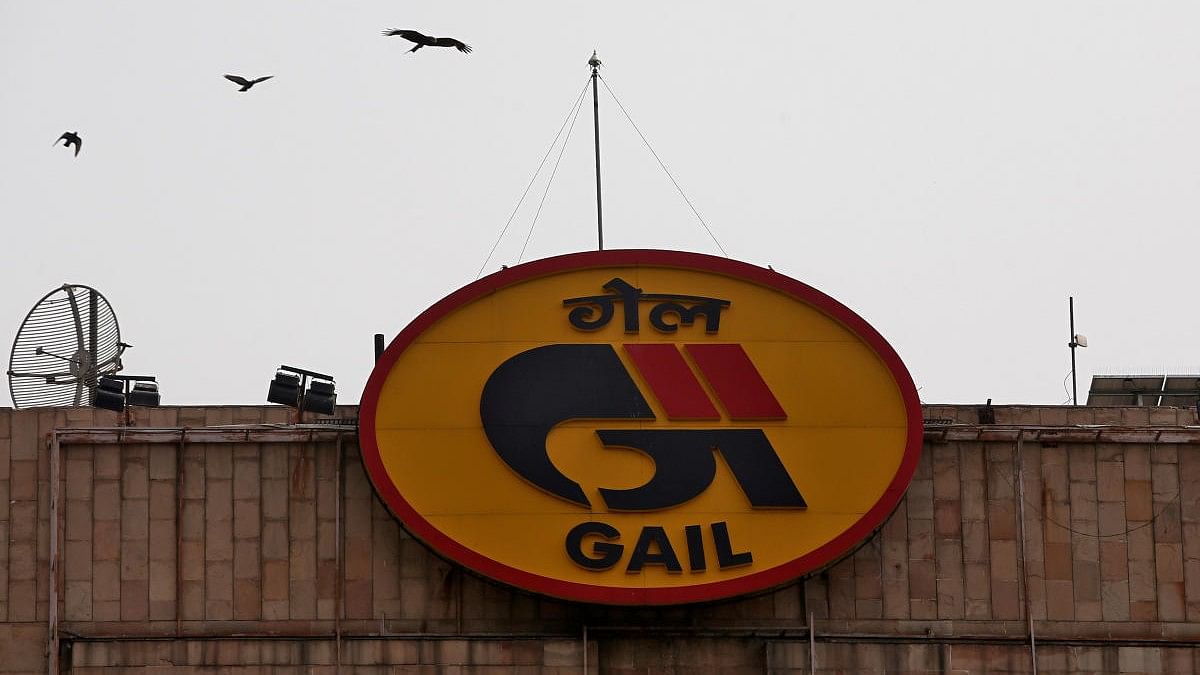
Representative image showing GAIL logo.
Credit: Reuters Photo
New Delhi: The construction of the Rs 12,940-crore 'Urja Ganga' gas pipeline, India's most ambitious project taking environment-friendly fuel to eastern parts of the country, has been delayed by nine months and will now be completed by March 2025, state-owned GAIL (India) Ltd said.
The 3,306-kilometre Jagdishpur-Haldia-Bokaro-Dhamra pipeline was originally targeted for completion by June 2024. But due to "delay in right of use (RoU) availability", the completion schedule has been revised "from June 2024 to March 2025", GAIL said in a stock exchange filing.
The bulk of the pipeline has already been constructed, and gas has started to flow in most cities along the route.
Traditionally, natural gas was available for use as fuel to generate electricity, make fertiliser or turn into CNG and cooking gas only in the western and northern parts of the country, as pipelines taking the fuel from source to users were limited to these parts.
In October 2016, work on laying a pipeline from Jagdishpur in Uttar Pradesh to Haldia in West Bengal, Bokaro in Jharkhand and Dhamra in Odisha began.
The line was extended to Guwahati in Assam from Barauni in Bihar, a length of 726 km, to take the fuel to hereto-unconnected states in the eastern region.
The Jagdishpur-Haldia-Bokaro-Dhamra Pipeline (JHBDPL), popularly called the Pradhan Mantri Urja Ganga pipeline, is to supply gas to the eastern states of Bihar, Jharkhand, Odisha and West Bengal.
GAIL, the firm executing the pipeline, said its board of directors in a meeting on June 28 approved the revision of the completion schedule.
The completion schedule for the 240-km Dhamra-Haldia pipeline has also been revised from June 2024 to March 2025, it added.
The company on May 10, 2019, stated that it has completed awards of all major contracts worth Rs 10,500 crore for pipeline supply and laying of the integrated 3400-km Jagdishpur-Haldia and Bokaro-Dhamra Natural Gas Pipeline (JHBDPL) and Barauni-Guwahati Pipeline (BGPL) pipeline.
The government provided 40 per cent viability gap funding amounting to Rs 5,176 crore for execution of JHBDPL. For the Barauni-Guwahati pipeline, a 60 per cent viability gap funding, amounting to Rs 5,559 crore, has been provided by the government.
The Pradhan Mantri Urja Ganga pipeline will connect all the geographical areas (more than 90) spread over Uttar Pradesh, Bihar, Orissa, West Bengal and further to the northeastern region of India.
When the project is fully completed, the northeastern/eastern part of India will become an integral part of the gas-based economy with the twin benefits of the cheapest gas transportation through Urja Ganga and gas pricing reforms.
Under the unified tariff regulations recently notified by sector regulator Petroleum and Natural Gas Regulatory Board (PNGRB), transportation tariff has been cut by about 50 per cent to Rs 99.90 per million British thermal units for the eastern parts, helping make the clean fuel more affordable.
The pipeline has already started feeding seven city gas distribution (CGD) projects in Varanasi, Patna, Ranchi, Jamshedpur, Kolkata, Bhubaneswar, and Cuttack. The pipeline also connects the refineries, located at Barauni, Haldia, and Paradip.
The JHBDPL has a transmission capacity of 16 million cubic metres of natural gas a day.